Chevrolet Electric Silverado A ZERO Production
Chevrolet’s Silverado electric pickup will be built at the Factory Zero assembly plant in Detroit-Hamtramck, Michigan, along with GMC’s Hummer EV SUV which will also be produced there, General Motors president Mark Reuss said today.
A new-from-the-ground-up EV pickup, and not adapted from the gas-powered Silverado, it will use the Ultium Platform. Ultium is General Motors’ virtual development tools and technology, said to have reduced development nearly 50 percent to 26 months.
Chevrolet estimates the new Silverado EV will have a 400-mile range on a full charge. Like its gas-powered sibling, there will be retail and fleet versions of the EV, both expected to be in demand. “Chevrolet will take everything Chevy’s loyal truck buyers love about Silverado — and more — and put it into an electric pickup that will delight retail and commercial customers alike,” said Reuss.
Factory ZERO, General Motors’ renamed Detroit-Hamtramck assembly plant, signifies the company’s zero crashes, zero emissions, and zero congestion outlook for the future. ZERO is the largest renovation and retooling ever for a General Motors manufacturing plant. Its paint and body shop, along with the general assembly area, are getting upgrades including new machinery, conveyors, controls, and tooling. The plant’s footprint is now over 4.5 million square feet.
General Motors previously hawked its modular propulsion system and Ultium battery-powered global EV platforms. The company is definitely looking to compete head-to-head for customers wherever they may exist. Ultium is a joint venture with LG in Lordstown, Ohio to produce battery cells for future battery electric vehicles (BEVs). Construction of that facility is underway.
General Motors world domination plan calls for a million EVs by 2025, and North American EV leadership. How will this work out with the power grid, President Biden’s future vision, and infrastructure improvements?
[Images: General Motors]
With a father who owned a dealership, I literally grew up in the business. After college, I worked for GM, Nissan and Mazda, writing articles for automotive enthusiast magazines as a side gig. I discovered you could make a living selling ad space at Four Wheeler magazine, before I moved on to selling TV for the National Hot Rod Association. After that, I started Roadhouse, a marketing, advertising and PR firm dedicated to the automotive, outdoor/apparel, and entertainment industries. Through the years, I continued writing, shooting, and editing. It keep things interesting.
More by Jason R. Sakurai
Latest Car Reviews
Read moreLatest Product Reviews
Read moreRecent Comments
- ChristianWimmer One of my clients is a company that is actually producing eFuels in Leipzig. Yes, they require a lot of energy to produce but this would not be an issue if Germany had nuclear energy or used the excess energy from wind and solar to produce these fuels. In such a scenario the energy losses wouldn’t really matter.Also, I am told that nations like Spain or the North African nations like Morocco or Tunisia could be ideal places to produce eFuels/Hydrogen due to their abundance of solar power. Again, the energy loses here would not matter since the energy used to produce these fuels is essentially “free”. If this path were pursued, Morocco and Tunisia could become wealthy nations and exporters of eFuels and Hydrogen. Countries with an abundance of solar or wind or hydro energy could be producing eFuels for their domestic consumption and export.Another argument which to me is irrelevant these days ist the poor thermal efficiency of ICE engines (25-35% gasoline, 40-45% diesel). One long trips with cruise control set to 130 km/h and even the occasional venture into the 180-200 km/h zone, my fully loaded (with my gear) A250 (2.0 4-cylinder 224-hp Turbo) can achieve an impressive gas mileage of 6 L / 100 km. That’s phenomenal - I am looking at six 1 liter bottles of water right now and that’s all my car needs to travel 100 km… amazing.So, I am a supporter of eFuels. I love internal combustion engines and if we want to use them in a climate neural way, then eFuels are a must. Also, to me every ICE car is way more sustainable and longer-lasting an an EV. Mazda, Toyota etc. are making the right move IMO.
- Blueice Once you infuse governmental unit regulation & [marketing] and taxpayerfunding, one knows quite well, dat the product or service isdestine to fail; which includes battery vehicles. Just axe yourself how revolutionary have your home batterydevices become ??? I am still waiting. after three decades, for a battery shaver whichonly requires charging two or three times per year.I am glad that I do not have a plug in Frau.
- Tassos Such a heavy breadvan on stilts, with so much HP, AND with ONLY 100 KWH Battery, I doubt if you will ever see 250 miles, let alone 300, under the best of conditions. In the winter, count on 150 miles range.And NO, it looks TERRIBLE. The only SUV that looks great is the RANGE ROVER.
- Tassos They sure are doing the right thing in the SHORT and MEDIUM term.As for the long term, in the long run, YOU'LL ALL BE DEAD, so WHO CARES.
- Tassos I wrote recommending a 20 year old CAMRY, beat up too. So the teen will not be too upset if it gets a few more dings.Somehow I cannot find my post, though.



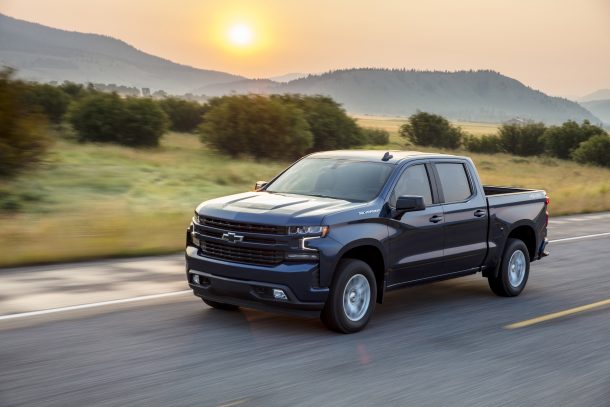

















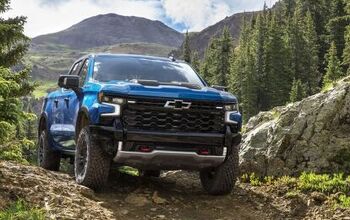
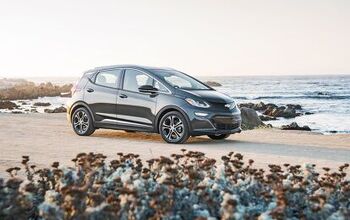
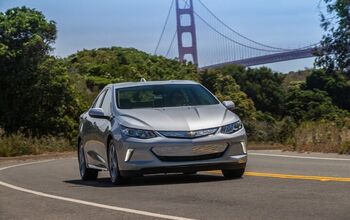

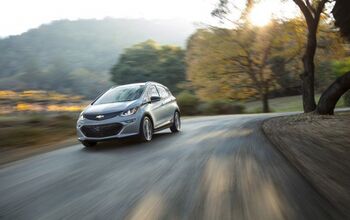










Comments
Join the conversation
...shows up late for the remedial class... So this will be the Chevy version of the Hummer pickup? Or am I doing that wrong?
On the plus side, opting for the EV version ensures it is US built.